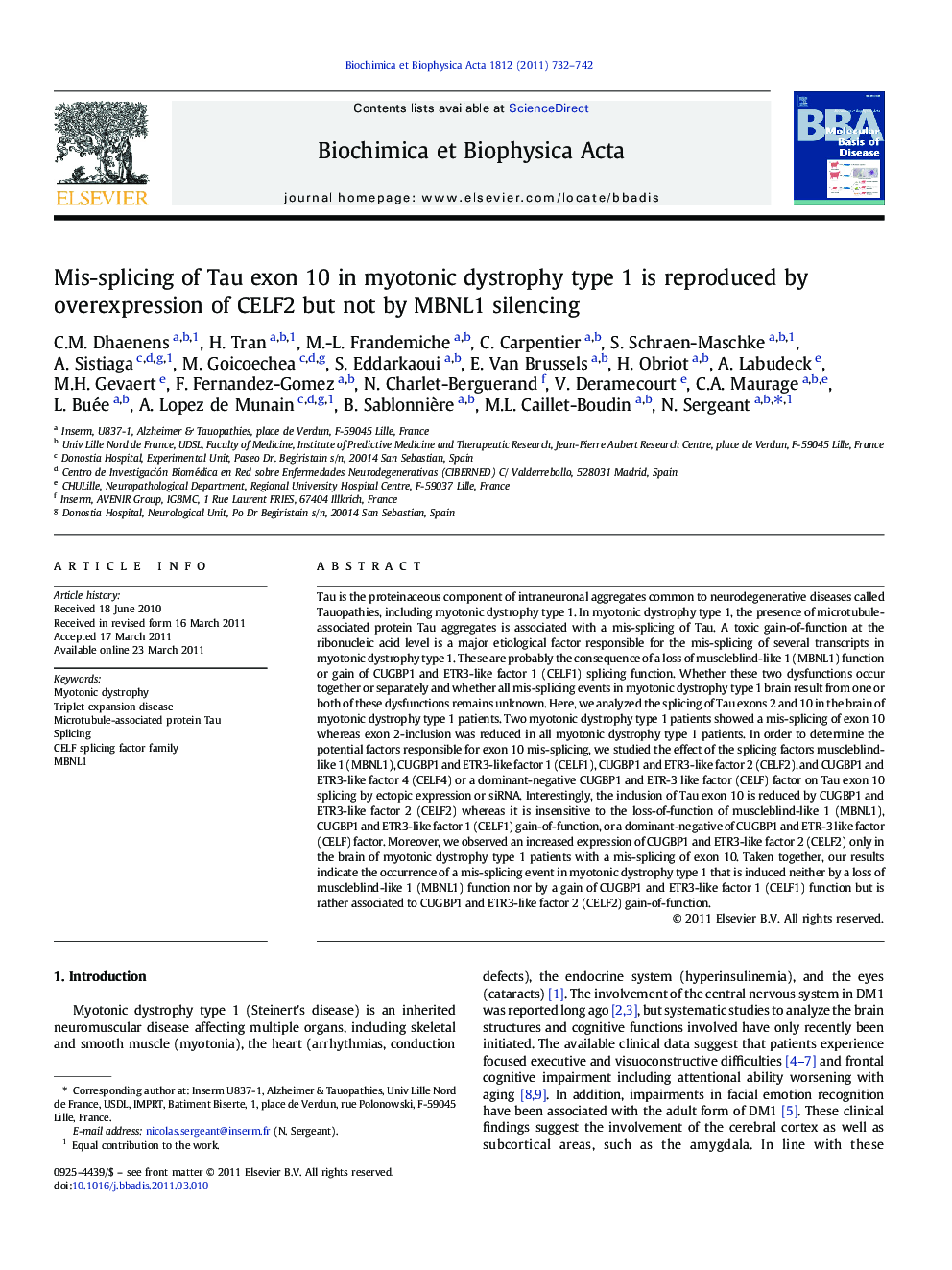| Article ID | Journal | Published Year | Pages | File Type |
|---|---|---|---|---|
| 1905145 | Biochimica et Biophysica Acta (BBA) - Molecular Basis of Disease | 2011 | 11 Pages |
Tau is the proteinaceous component of intraneuronal aggregates common to neurodegenerative diseases called Tauopathies, including myotonic dystrophy type 1. In myotonic dystrophy type 1, the presence of microtubule-associated protein Tau aggregates is associated with a mis-splicing of Tau. A toxic gain-of-function at the ribonucleic acid level is a major etiological factor responsible for the mis-splicing of several transcripts in myotonic dystrophy type 1. These are probably the consequence of a loss of muscleblind-like 1 (MBNL1) function or gain of CUGBP1 and ETR3-like factor 1 (CELF1) splicing function. Whether these two dysfunctions occur together or separately and whether all mis-splicing events in myotonic dystrophy type 1 brain result from one or both of these dysfunctions remains unknown. Here, we analyzed the splicing of Tau exons 2 and 10 in the brain of myotonic dystrophy type 1 patients. Two myotonic dystrophy type 1 patients showed a mis-splicing of exon 10 whereas exon 2-inclusion was reduced in all myotonic dystrophy type 1 patients. In order to determine the potential factors responsible for exon 10 mis-splicing, we studied the effect of the splicing factors muscleblind-like 1 (MBNL1), CUGBP1 and ETR3-like factor 1 (CELF1), CUGBP1 and ETR3-like factor 2 (CELF2), and CUGBP1 and ETR3-like factor 4 (CELF4) or a dominant-negative CUGBP1 and ETR-3 like factor (CELF) factor on Tau exon 10 splicing by ectopic expression or siRNA. Interestingly, the inclusion of Tau exon 10 is reduced by CUGBP1 and ETR3-like factor 2 (CELF2) whereas it is insensitive to the loss-of-function of muscleblind-like 1 (MBNL1), CUGBP1 and ETR3-like factor 1 (CELF1) gain-of-function, or a dominant-negative of CUGBP1 and ETR-3 like factor (CELF) factor. Moreover, we observed an increased expression of CUGBP1 and ETR3-like factor 2 (CELF2) only in the brain of myotonic dystrophy type 1 patients with a mis-splicing of exon 10. Taken together, our results indicate the occurrence of a mis-splicing event in myotonic dystrophy type 1 that is induced neither by a loss of muscleblind-like 1 (MBNL1) function nor by a gain of CUGBP1 and ETR3-like factor 1 (CELF1) function but is rather associated to CUGBP1 and ETR3-like factor 2 (CELF2) gain-of-function.
Graphical abstractFigure optionsDownload full-size imageDownload high-quality image (132 K)Download as PowerPoint slideHighlights► Herein, we showed a mis-splicing of Tau exon 10 in myotonic dystrophy brain. ► This implies a deregulation of the splicing factor CELF2. ► Implication of MBNL1 or CELF1 is ruled out. ► Our work demonstrated a deregulation of CELF2 in myotonic dystrophy brain.
